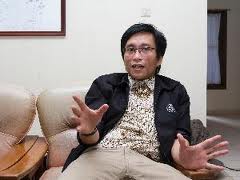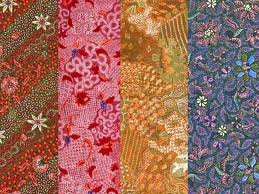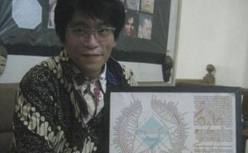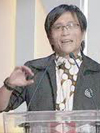|
Biography
Tomoyuki Nishita is a professor in the Department of Complexity Science
and Engineering
(also in the Department of Information Science) at the University of
Tokyo, Japan since
1998. He received his BE, ME and Ph.D in Engineering in 1971, 1973,
and 1985,
respectively, from Hiroshima University. He taught at Fukuyama University
from 1979 to
1998 He was an associate researcher in the Engineering Computer Graphics
Laboratory at
Brigham Young University from 1988 to 1989. His research interests center
in CG
including lighting/shading models (radiosity), natural phenomena, real-time
rendering,
geometric modeling, and non-photorealistic rendering. He is one of the
pioneers of
radiosity method. He has written 15 SIGGRAPH papers and 18 EUROGRAPHICS
papers.
Dr. Nishita received Research Award on Computer Graphics from Information
Processing
Society of Japan in 1987, and also received Steaven A. Coons award from
ACM
SIGGRAPH in 2005. He was a president of The Institute of Image Electronics
Engineers of
Japan in 2009-2010.
"Particle-based Simulation for Computer Graphics "
In recent years, point primitives have received growing attention in computer graphics.
As point primitives, particles and metaballs are often used. The particle system refers
to a computer graphics technique to simulate certain fuzzy phenomena. Point-based
modeling/rendering has its roots in particle systems. Metaball technique is used for
definition of implicit surfaces or density distribution. The SPH (Smoothed-particle
hydrodynamics) method is also used for simulating fluid flows. They can add realism to
a scene. These techniques are useful for representation of object geometry, and
simulation/rendering of dynamics and optical effects of natural phenomena.
My talk includes the following topics: 1) Geometric modeling represented by metaballs or
points such as point-sampled surfaces. 2) Efficient rendering of metaballs using Bezier
clipping method and GPU. 3) Realistic rendering of natural scenes consisting small particles
such as clouds, water, smoke, atmospheric scattering, snow (avalanche), solar prominence,
ice melting, and fire. And Realistic shading due to radiosity for point-sampled geometry.
4) Dynamic simulation of fluids and material such as water flow(or water droplets on windshield),
sands (or dune), dust, hair, strings, cloths, object destruction, Magnetorheological fluid,
and oil painting.
|
|
  
Biography
"Hokky
Situngkir is interested in diverse spectrum of research work,
including artificial societies and social simulations, memetics and
cultural studies, dynamical system analysis, neural network and
statistical modeling of econophysics and financial analysis. He was
one of
the founders of Bandung Fe Institute and the chairperson of Dept.
Computational Sociology at the institute until now. Most of his works
are
reflecting the computational model in broad theoretical as well as
practical fields. His research projects on econophysics are presented
as a
senior research fellow at the Surya Research International Inc., an
science-based consulting company in Indonesia with some previous
consultancy projects in Jakarta Stock Exchange. One of his current
concerns is about the approach of complexity sciences to Indonesian
traditional culture and ethnography. He was one of the founders of
Indonesian Archipelago Cultural Initiatives (IACI) that has maintained
the
Indonesian Traditional Heritages Open Digital Library
(www.budaya-indonesia.org).
His works in the subject of complexity of
Indonesian traditional culture have been widely implemented as the mapping
of Indonesian batik, traditional songs, traditional architecture, and
the
"Physics of Batik", a popular fractal geometry-based computational
platforms for Indonesian batik. He has published hundreds of research
papers in those areas, including some of the in the refereed international
journals and conference papers, such as Journal of Social Complexity,
Physica A, Journal of Literary Complexity Studies. For his works, he
has
been awarded the Ahmad Bakrie Award 2011 for the category of Outstanding
Young Scientist. He is currently also an Ashoka Fellow for his activities
empowering community through the works of scientific research."
"Computational
Batik: the deconstruction and re-generation of Indonesian
Batik"
(PDF)
The
presentation discusses some aspects of Iterated Function System
while
referring to some interesting point of view into Indonesian traditional
batik. The deconstruction is delivered in our recognition of the
Collage
Theorem to find the affine transform of the iterated function system
that
attracts the iteration of drawing the dots into the complex motif
of ? or
at least, having high similarity to ? batik patterns. We employ
and
revisit the well-known Chaos Game to reconstruct after having some
basic
motifs is deconstructed. The reconstruction of the complex pattern
opens a
quest of creativity broadening the computationally generated batik
exploiting its self-similarity properties. A challenge to meet the
modern
computational generative art with the traditional batik designs
is
expected to yield synergistic interesting results aesthetically.
The paper
concludes with two arrows of our further endeavors in this field,
be it
enriching our understanding of how human cognition has created such
beautiful patterns and designs traditionally since ancient civilizations
in our anthropological perspective, while in the other hand providing
us
tool to the empowerment of batik as generative aesthetics by employment
of
computation.
|
| |
Session 1 (Visual Simulation)
Chair: Osama Halabi
+ Simple Fire-like Animation Using Noise-based
Dynamic Texture
Janyl Tynystanova and Norishige
Chiba
+ Visual Simulation of Lotus Leave Effect
Dulip Dayan
Epasinghe, Minghui Hong and R.P.C. Janaka Rajapakse
+ The Visual Simulation of Collapse of Trees by External Elements
Abdul Hadi, Kouki Itou and Tsukasa
Kikuchi
+ An Application of Noise-based Wind Field Generation for Animating
Fire
Oyundolgor Khorloo and Norishige Chiba
* Visual Simulation of Bubbles in Carbonated Water
Yoshihiro Kanamori, Takeshi Nishikawa, Yonghao
Yue and Tomoyuki Nishita
* Visual Simulation of Whirlwind Using a Grid and Particles
Satoshi Nakajima and Issei Fujishiro
*:
full papers (20 min.)
+:
short papers (15 min.)
Session
2 (Entairtainment and Broadcasting)
Chair: Shinya Miyazaki
+ The entertainment display providing healing and
enjoyment for people in the public space
Tetsyta Saito, Sachi Urano, Daiki Satoi
and Junichi Hoshino
+ PARAOKE alpha: a new application development of multiplex-hidden display
technique for music entertainment system
Wataru
Fujimura, Yukua Koide, Takuya Sakai, Songer Robert, Takayuki Kosaka
and Akihiko Shirai
+ Information Dynamics in FIFA Women's World Cup Germany 2011 Final
Hiroyuki Iida, Takeo Nakagawa,
Shogo Sone, Apimuk Muangkasem, Taichi Ishitobi and Toshihisa Okaneya
+ SanjigenJiten : Game System for Acquiring New Languages Visually
Robert Howland, Emily Olmstead,
Sachi Urano and Junichi Hoshino
+ International Standard of Automatic and Intelligent News Broadcasting
System
Masaki
Hayashi, Masayuki Nakajima and Steven Bachelder
* GAYAIT: An Interactive Media System using a large number of Video
Clips and its applications
Shinji Mizuno,
Ryosuke Hirano and Yukihiko Tsutsumi
*:
full papers (20 min.)
+:
short papers (15 min.)
Session
3 (3D Modeling and Rendering)
Chair: Shinji Mizuno
+ Feature Extraction for Illustrating 3D Stone
Tools from Unorganized Point Clouds
Enkhbayar Altantsetseg, Yuta Muraki,
Katsutsugu Matsuyama, Fumito Chiba and Kouichi Konno
* Generating Layout of Nonperiodic Aggregates
Kaisei
Sakurai and Kazunori Miyata
* Proposal of digital sculpting with history management of strokes
Ryota
Takeuchi, Taichi Watanbe, Koji Mikami and Kunio Kondo
* Progressive Photon Beams with Adaptive Free Path Sampling
Kentaro
Suzuki, Yonghao Yue and Tomoyuki Nishita
* Forensic CG Video Generation with Augmented Reality Technology
Atsushi
Sugiura, Masahiro Toyoura and Xiaoyang Mao
*:
full papers (20 min.)
+:
short papers (15 min.)
Session
4 (Industrial and Social Application)
Chair: Issei Fujishiro
+
A Flow Representation for EFD/CFD Integrated Visualization
Kaori Hattanda, Takayuki Itoh, Shigeya
Watanabe, Shigeru Kuchi-Ishi and Kanako Yasue
+ A Study on Visualizing the Comfort of the Shoes
Satoshi Kondo and Katsuhiro Kitajima
+ A Fast Pocket Extraction and Evaluation for Protein Surfaces
Ayaka Kaneko, Yukari Nakamura and Takayuki
Itoh
+ 3D Virtual Eyeglass Frames Modeling from Multiple Camera Image Data
Based on the GFFD Deformation Method
Noriaki Tamura, Somsangouane Singthiemphone
and Katsuhiro Kitajima
+ Navigation Aid for Blind People Using Depth Information and Augmented
Reality Technology
Osama Halabi, Mariam Al-Ansari,
Yasmin Halwani, Fatma Al-Mesaifri and Roqaya Al-Shaabi
+ Development of an Shadowgraph System for Activating Public Spaces
Tetsyta
Saito, Sachi Urano, Daiki Satoi and Junichi Hoshino
*:
full papers (20 min.)
+:
short papers (15 min.)
Session 5 (Vision and Imaging)
Chair: Xiaoyang Mao
+ Gait Feature Analysis for Personal De-identification
Genki Momose and Hiroki Takahashi
+ Evolutionary Face Tracking by Intensity Distribution Model
Junya Sato and Takuya Akashi
+ Jump Movement Analysis on Mentally-retarded Students for Supporting
Physical Exercise
Nagatoshi Hayabusa and Hiroki Takahashi
+ Find a meaning within character silhouette: Stylized character design
support method using silhouette
Rianti Hidayat, Kunio Kondo, Koji Mikami,
Akinori Ito and Kengo Watanabe
+ Gaze Tracking for Mobile Devices Operation
Naoya Takeuchi
and Hiroki Takahashi
* Efficient Stereo Matching Approach for Stereoscopic Video and Its
Evaluation
Junichi
Nishikata and Eiji Sugisaki
*:
full papers (20 min.)
+:
short papers (15 min.)
Session
6 (Contents Creation and Evaluation)
Chair: Akihiko Shirai
+ Cast list generating system based on structured
screenplay
Kai Lenz, Akinori Ito, Koji Mikami
and Kunio Kondo
+ A new visualization method to display Makuranosoushi
Moe Kumasaka, Yudai Moriya, Toshiaki
Okumura, Kuniaki Yajima and Hitoshi Watanabe
+ The Use of Special Effects in Indonesian Movies
Ina Riyanto
+ The Efficientcy of Photography in Designing Posters / Relation of
the Photo and Writing
Nilgun
Salur
+ Simple Character Walk Cycle Based on Mask & Vertex Animation Technique
Michael Sega Gumelar
* Quantitative Assessment of Composition in Art
Sachi Urano
and Junichi Hoshino
*:
full papers (20 min.)
+:
short papers (15 min.)
Interactive Posters
- A Coaster type Sensing Device for Supporting
Comfortable Safe Limits of Alcohol Consumption
Masanori Ueda, Masahiko Kubara, Makoto
Ito, Mamoru Endo, Masashi Yamada and Shinya Miyazaki
- Visual Simulation of breaking waves by Lagrangian and Euler's method
Zhuge Shenping,
Kouki
Itou and Tsukasa Kikuchi
- Visual Simulation of Dust Particles Ascending in Water
Kenta Tanaka, Kouki
Itou and Tsukasa Kikuchi
- Automatic Generation of Building Instructions for Block Toys
Sumiaki Ono, Andre Alexis, Nakajima
Masayuki and Youngha Chang
- Expression of Sound which Amplifies Visual Depth Perception in Two-Dimensional
Expression
Katsuya Asahi,Tomoya Itou, Kouki Itou
and Tsukasa Kikuchi
- Digital Textbooks of S3D Japanese Animation Making
Ayumi Miyai, Kenji Ozawa and Masayuki
Nakajima
- Recognition of fingernail
Yu Fukunaka and Hisashi Sato
- B.O.M.B. -Beat Of Magic Box- Interactive Session Device Using Wireless
Communication System
Yoshihito Nakanishi and Chuichi Arakawa
- A New Method of 3D Facial Expression Generation Based upon Point Clouds
Xue Mei, Tokai Shogo and Hase Hiroyuki
- Development of An Automatic Shooting System for Figure Skating Based
on Coordinative Control of Multi-cameras
Hiroaki Yamaguchi, Tsuyoshi Taki
and Junichi Hasegawa
- The shop character system for public advertising and shopping
Hiroshi Mori, Tetsuya Saito and
Jun'Ichi Hoshino
- A Study on Group Behavior Analysis Using A Novel Graph
Yuya Kuwayama, Tsuyoshi Taki and
Junichi Hasegawa
- The elements media-art is required in art project in the local areas
Yushi Tajima
and Katsuhiko Ogawa
- Teaching Adobe Illustrator Program Preparing for Deaf Students
Lale Demir
Oransay
|





